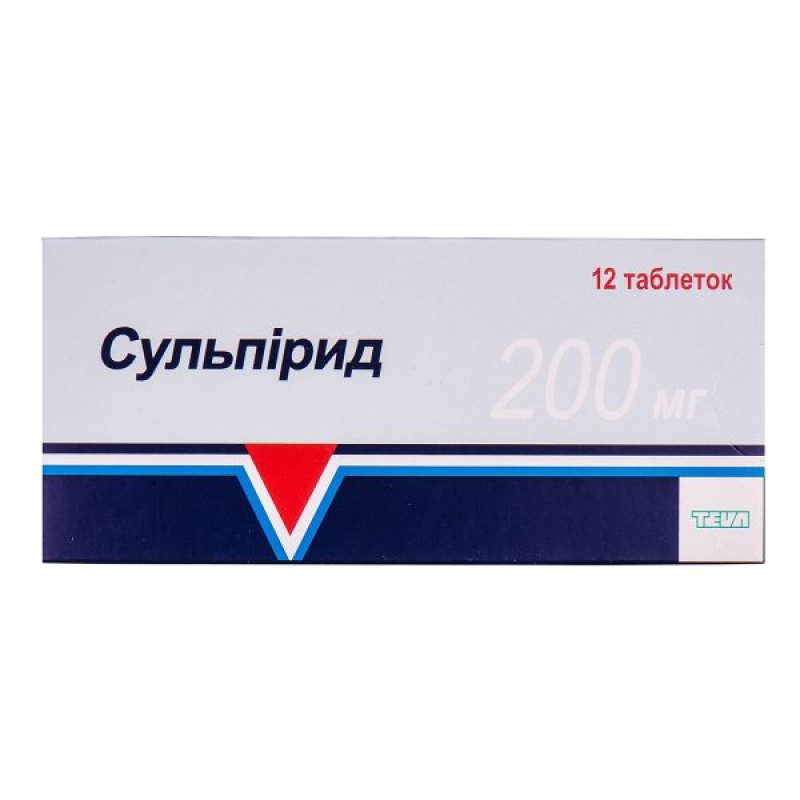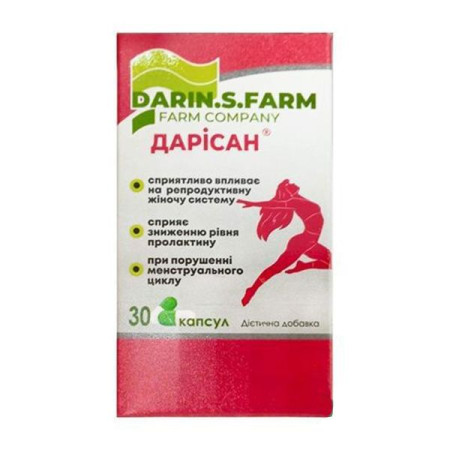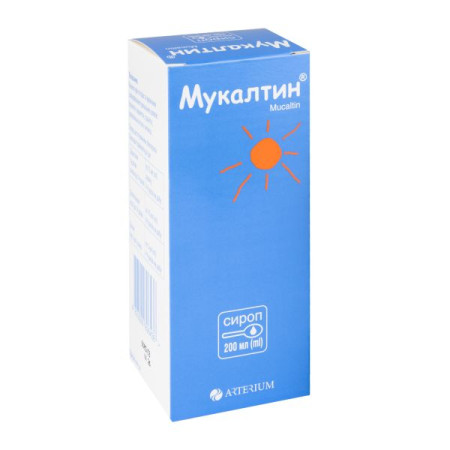Sulpiride tablets 200 mg No. 12

Pharmacological properties
Pharmacodynamics. Sulpiride belongs to the group of substituted benzamides, the action of which is structurally different from phenothiazines, butyrophenones and thioxanthenes.
In terms of action and biochemical composition, Sulpiride shares with these classical neuroleptics certain properties that indicate antagonism of the dopamine receptor in the brain. The list of these differences includes the absence of catalepsy at doses active in other behavioral tests, the absence of effect during the administration of norepinephrine or serotonin (5-HT), a slight anticholinesterase activity, the absence of effect on muscarinic receptor or GABA receptor binding. One of the characteristics of Sulpiride is its bimodal activity, since it has the properties of both an antidepressant and a neuroleptic. Improvement of mood is noted after a few days of treatment, and then the pronounced symptoms of schizophrenia disappear. The sedative effect and the absence of emotional reactions, as usually associated with classical neuroleptics of the phenothiazine or butyrophenone type, are not a characteristic feature of Sulpiride therapy.
The therapeutic effect during the treatment of schizophrenia is noted 8-12 weeks after the start of treatment.
Sulpiride activates the secretion of prolactin. The active substance improves mucus secretion and blood supply to the mucous membrane of the stomach and duodenum.
Sulpiride also has an antiemetic effect.
Pharmacokinetics. Sulpiride is slowly absorbed in the gastrointestinal tract. The presence of food reduces absorption by 30%. Bioavailability is low (27-34%) and depends on individual differences. The active substance quickly penetrates the tissues; only a small amount of it penetrates the blood-brain barrier. C max in blood plasma is achieved 3-6 hours after oral administration. Binding to blood plasma proteins is approximately 40%, the volume of distribution is from 1 to 2.7 l / kg. T ½ is approximately 8 hours. In patients with severe renal impairment, it is prolonged to 20-26 hours after i / v administration. A small amount of the active substance penetrates into breast milk. It is excreted in urine and feces mainly unchanged.
Indication
Capsules. Short-term symptomatic treatment of anxiety disorders in adults when conventional therapeutic measures have not yielded results.
Serious behavioral disorders (agitation, anxiety, self-harm, stereotypies) in children over 6 years of age, especially in patients with autism syndrome.
Tablets. Acute mental disorders. Chronic mental disorders (schizophrenia, chronic disorders not related to schizophrenia: paranoid states, chronic hallucinatory psychosis).
Application
capsules
The minimum effective dose should always be prescribed. If the patient's clinical condition allows, treatment should be initiated at a low dose, followed by gradual dose titration.
Sulpiride should be taken at least 1 hour before or 2 hours after a meal, as the presence of food in the stomach reduces the absorption of the drug by 30%.
Do not take Sulpiride at the same time as antacids or sucralfate within 2 hours of taking them.
Adults: Short-term symptomatic treatment of anxiety disorders in cases where conventional therapeutic measures have failed: daily dose is 50-150 mg for no more than 4 weeks.
Children aged 6 years and over. Serious behavioural disorders (agitation/anxiety, self-harm, stereotypies), especially in patients with autistic syndromes: 5 mg/kg body weight per day (if necessary, the dose can be increased to 10 mg/kg body weight per day). Another dosage form is more suitable for children - oral solution.
Elderly patients: use the usual doses as for adult patients. The dose is reduced in the presence of impaired renal function (on the recommendation of a doctor).
Patients with renal impairment: for this group of patients, doses should be adjusted according to the degree of renal impairment, the dose should be reduced or the interval between doses should be increased.
Tablets. For oral use.
The minimum effective dose should always be prescribed. If the patient's clinical condition allows, treatment should be initiated at a low dose, followed by gradual dose titration.
The drug in this dosage form is intended for adults only.
The daily dose is 200-1000 mg.
Contraindication
Hypersensitivity to the components of the drug.
Pheochromocytoma.
Acute porphyria.
Concomitant prolactin-dependent tumors (for example, prolactin-secreting pituitary adenoma (prolactinoma) and breast cancer).
Concomitant use of levodopa.
Concomitant use of non-antiparkinsonian dopamine agonists (cabergoline and quinagolide).
Patients with congenital galactose intolerance, Lapp lactase deficiency.
Side effects
From the blood and lymphatic system: leukopenia, neutropenia, agranulocytosis.
Cardiovascular: orthostatic hypotension, cases of QT prolongation and ventricular arrhythmias such as ventricular flutter, torsades de pointes and ventricular tachycardia, which may result in ventricular fibrillation or cardiac arrest, sudden death.
On the part of the hepatobiliary system: increased levels of liver enzymes.
On the part of the endocrine system: transient hyperprolactinemia, disappearing after discontinuation of treatment, which may lead to amenorrhea, galactorrhea, gynecomastia, impotence, frigidity, breast enlargement and breast pain.
From the side of the central nervous system: early dyskinesia (spastic torticollis, oculogyric crisis, trismus), which decreases with the use of anticholinergic antiparkinsonian drugs.
Extrapyramidal symptoms and related disorders:
parkinsonism and related symptoms: tremor, hypertension, hypokinesia, hypersalivation;
akinetic symptoms, the presence or absence of hypertonicity and are partially attenuated by the use of anticholinergic antiparkinsonian agents;
hyperkinetic-hypertonic, excitable motor activity;
akathisia.
Tardive dyskinesia, characterized by involuntary rhythmic movements, particularly of the tongue and/or face, which can occur during long-term treatment with all neuroleptics; in this case, anticholinergic antiparkinsonian drugs are ineffective and may exacerbate clinical manifestations.
Sedative effect or drowsiness.
There were reports of insomnia.
Convulsions (see Precautions).
Potentially fatal neuroleptic malignant syndrome (see Precautions).
Skin and subcutaneous tissue disorders: maculopapular rash.
General disorders and administration site conditions: weight gain, hypersensitivity reactions.
Conditions during pregnancy, postpartum and perinatal periods: withdrawal syndrome in newborns.
Special instructions
In some patients, the drug may provoke motor agitation. When symptoms of aggression or a phase of excitement appear, low doses of the drug may increase them. Constant monitoring of patients with symptoms of hypomania is necessary. Patients with aggressive behavior or agitation with impulsivity can take sulpiride with sedatives.
Except in special cases, this medicine should not be prescribed to patients with Parkinson's disease. Extrapyramidal disorders and motor agitation (akathisia) may occur in a small number of patients. It may be necessary to reduce the dose or the use of antiparkinsonian drugs.
Acute withdrawal syndrome, including nausea, vomiting, hyperhidrosis and insomnia, has been reported following abrupt discontinuation of neuroleptics. Recurrence of psychotic symptoms may also occur. Movement disorders such as akathisia, dystonia and dyskinesia have been reported. Therefore, gradual discontinuation is recommended.
The drug may cause only minor changes in the electroencephalogram, and if neuroleptics can lower the epileptic threshold, then this disorder has not been assessed when taking the drug. It is recommended to prescribe the drug with caution to patients with unstable epilepsy, and patients with a history of epilepsy require constant monitoring during treatment with sulpiride.
Patients requiring sulpiride and receiving anticonvulsant therapy do not need to change the dose of the anticonvulsant. Muscle cramps have been reported in patients without a history of epilepsy.
Since hyperglycemia may develop when using atypical antipsychotics, appropriate monitoring of blood glucose levels is necessary in individuals with diabetes mellitus or with risk factors for developing diabetes mellitus at the beginning of sulpiride treatment.
Sulpiride does not have anticholinergic effects.
As with other drugs that are primarily excreted by the kidneys, patients with renal insufficiency should have their dose reduced and titrated in small steps; in cases of severe renal insufficiency, it is advisable to interrupt the course of treatment.
During treatment with sulpiride, patients with epilepsy should be carefully monitored, since sulpiride may lower the seizure threshold, elderly patients are more prone to postural hypotension, sedation and extrapyramidal effects of the drug; there have been reports of seizures in patients treated with sulpiride (see Side Effects).
Cases of leukopenia, neutropenia and agranulocytosis have been reported with antipsychotics, including sulpiride. Infections of unknown origin or fever may indicate blood dyscrasias and require immediate laboratory blood testing.
It is recommended to avoid the use of sulpiride in patients with acute porphyria.
Potentially fatal neuroleptic malignant syndrome. In the event of an increase in body temperature of unknown etiology, treatment should be discontinued immediately, as this may be one of the symptoms of neuroleptic malignant syndrome, which can develop while taking neuroleptics (pallor, hyperthermia, autonomic disorders, impaired consciousness, muscle rigidity).
Signs of autonomic dysfunction, such as increased sweating and changes in blood pressure, may develop before the onset of hyperthermia and are early warning symptoms.
QT prolongation. Sulpiride may cause QT prolongation. This increases the risk of serious ventricular arrhythmias, particularly torsades de pointes, which is more likely to occur in patients with bradycardia, hypokalemia, and congenital or acquired QT prolongation (when sulpiride is taken concomitantly with a drug that prolongs the QT interval).
It is recommended to control factors that may provoke the manifestation of heart rate disorders before starting treatment and, if possible, according to the patient's clinical status: bradycardia less than 55 beats / min, electrolyte imbalance, namely hypokalemia (requiring correction), congenital prolongation of the Q-T interval.
Long-term treatment with the drug may cause severe bradycardia (less than 55 beats/min), hypokalemia, conduction disturbances, or QT interval prolongation.
Sulpiride should be administered with caution to patients with similar risk factors, as well as to patients with cardiovascular disorders, a tendency to prolong the QT interval. Except in exceptional circumstances, it is recommended to perform an ECG during the initial examination of patients who need to be treated with a neuroleptic drug. The drug should not be taken simultaneously with other neuroleptics.
Stroke. An increased risk of stroke has been reported in elderly patients with acquired dementia-related dementia treated with certain atypical antipsychotics. The mechanism of this increased risk is unknown. An increased risk cannot be excluded when taken with other antipsychotics or in other patient groups. The drug should be used with caution in patients with existing risk factors for stroke.
Elderly patients with dementia. The risk of death is increased among elderly patients with dementia-related psychosis who are treated with antipsychotic medications.
Although the causes of mortality in clinical trials with atypical antipsychotics varied, the majority of deaths were due to cardiovascular causes (e.g. heart failure, sudden death) or infections (e.g. pneumonia).
It has been reported that treatment with standard antipsychotic drugs may increase mortality in the same way as with atypical antipsychotic drugs.
The respective role of antipsychotic drug and characteristics of this patient group in increasing mortality rates in epidemiological studies remains uncertain.
Venous thromboembolism: Cases of venous thromboembolism have been reported with antipsychotic drugs. Since patients taking antipsychotics often have acquired risk factors for venous thromboembolism, all potential risk factors for venous thromboembolism should be identified before and during treatment with sulpiride and preventive measures should be taken.
It is not recommended to take the drug together with alcohol, levodopa, lithium preparations, antiparkinsonian drugs, dopamine agonists, antiparasitic drugs that can cause bidirectional torsades de pointes, methadone, other neuroleptics and drugs that can cause bidirectional torsades de pointes (see INTERACTIONS).
When using the drug even in low doses, it is necessary to take into account the risk of developing tardive dyskinesia, particularly in elderly patients.
This medicine contains lactose, therefore it is not recommended for use in patients with galactose intolerance, lactase deficiency or glucose-galactose malabsorption syndrome (a rare hereditary disease).
The drug should not be taken late at night due to the possibility of sleep disturbance.
Use during pregnancy or breastfeeding. Pregnancy. In animals, a decrease in fertility was observed, associated with the pharmacological properties of the drug (prolactin-mediated effect). Animal studies do not indicate direct or indirect harmful effects on the course of pregnancy, embryonal/fetal development and/or postnatal development. There are very limited data on the effects on the course of pregnancy in humans. In almost all cases of fetal or neonatal malformations reported in the context of sulpiride use during pregnancy, alternative explanations are possible that seem more likely. Therefore, due to limited experience, sulpiride is not recommended during pregnancy. When using antipsychotics, including sulpiride, in the third trimester of pregnancy, there is a risk of adverse reactions, in particular extrapyramidal symptoms and withdrawal syndrome, in which the severity and duration of adverse reactions in newborns after delivery may vary. Agitation, hypertension, hypotension, tremor, drowsiness, respiratory distress syndrome, and feeding disturbances have been reported. Therefore, close monitoring of the newborn should be performed.
Children. Since the efficacy and safety of sulpiride in children have not been fully studied, it should be used with caution (see Precautions). Due to the effect of the drug on cognitive abilities, it is recommended to conduct an annual clinical examination to assess learning ability. The dose of the drug should be periodically adjusted based on the clinical status of the child.
The use of the drug in capsule form in children under 6 years of age is contraindicated, as it may lead to airway obstruction.
The drug in tablet form is not used in children.
Ability to influence the reaction rate when driving vehicles or working with other mechanisms. The drug may have a negative effect on psychomotor activity. During the use of the drug, driving vehicles and working with other mechanisms is contraindicated.
Interactions
sedatives
It should be remembered that many drugs or substances can have an additive inhibitory effect on the central nervous system and lead to a decrease in mental activity. These drugs include morphine derivatives (analgesics, cough suppressants and substitution therapy drugs), neuroleptics, barbiturates, benzodiazepines, non-benzodiazepine anxiolytics (such as meprobamate), hypnotics, sedative antidepressants (amitriptyline, doxepin, mianserin, mirtazapine, trimipramine), sedative H 1-antihistamines, centrally acting antihypertensives, baclofen and thalidomide.
Drugs that can induce torsades de pointes. A number of drugs, with or without antiarrhythmic activity, can induce this serious cardiac arrhythmia. Precipitating factors include hypokalemia and bradycardia or the presence of congenital or acquired QT prolongation.
Such drugs include, in particular, antiarrhythmic drugs of classes Ia and III and some neuroleptics.
Erythromycin, spiramycin, and vincamine only enter into such an interaction in dosage forms for intravenous administration.
The simultaneous administration of two drugs that cause torsades de pointes is contraindicated. But the exceptions are methadone and some other drugs: antiparasitic drugs (halofantrine, lumefantrine, pentamidine) are undesirable to combine with other torsadogenic drugs; neuroleptics that can cause the development of bidirectional spindle-shaped ventricular tachycardia are also undesirable, but not contraindicated to combine with other torsadogenic drugs.
Contraindicated combinations. Non-antiparkinsonian dopamine receptor agonists (cabergoline, quinagolide) - there is mutual antagonism between dopamine agonists and neuroleptics.
Undesirable combinations. Antiparasitic drugs that can cause the development of bidirectional torsades de pointes (halofantrine, lumefantrine, pentamidine). Due to the increased risk of ventricular arrhythmias, in particular bidirectional torsades de pointes.
If possible, treatment with azole antifungals should be discontinued. If concomitant treatment cannot be ruled out, QT interval and ECG should be monitored continuously before and during treatment.
Antiparkinsonian dopamine agonists (amantadine, apomorphine, bromocriptine, entacapone, lisuride, pergolide, piribedil, pramipexole, ropinirole, selegiline) - there is mutual antagonism between dopamine agonists and neuroleptics.
Dopamine agonists may cause or exacerbate existing psychiatric disorders. If neuroleptics are required in patients with Parkinson's disease treated with dopamine agonists, the dose of dopamine agonists should be gradually reduced (abrupt withdrawal may put the patient at risk of developing neuroleptic malignant syndrome).
Other drugs that may cause the development of bidirectional spindle-shaped ventricular tachycardia: antiarrhythmic drugs of class Ia (quinidine, hydroquinidine, disopyramide) and class III (amiodarone, sotalol, dofetilide, ibutilide) and other drugs such as bepridil, cisapride, diphemanil, erythromycin IV, mizolastine, vincamine IV, moxifloxacin, spiramycin IV. Due to the increased risk of ventricular arrhythmias, in particular bidirectional spindle-shaped ventricular tachycardia.
Other neuroleptics that can cause the development of bidirectional spindle-shaped ventricular tachycardia (amisulpride, chlorpromazine, cyamemazine, droperidol, haloperidol, levomepromazine, pimozide, hypothiazide, sertindole, sulpiride, sultopride, tiapride, veralipride). Due to the increased risk of ventricular arrhythmias, in particular bidirectional spindle-shaped ventricular tachycardia.
Ethanol: Potentiation of the sedative effects of neuroleptics.
Patients should avoid drinking alcoholic beverages or medications that contain alcohol.
Levodopa. There is mutual antagonism between dopamine agonists and neuroleptics.
Patients with Parkinson's disease are prescribed the minimum effective doses of each of these drugs.
Methadone: Increased risk of ventricular arrhythmias, including bidirectional torsades de pointes.
Combinations requiring caution
Combinations requiring caution
Increased risk of ventricular arrhythmias, particularly torsades de pointes. Clinical and ECG monitoring is required.
Drugs that can cause bradycardia (including class Ia antiarrhythmics, β-adrenergic blockers, some class III antiarrhythmics, some calcium channel blockers, digitalis glycosides, pilocarpine, anticholinesterase agents).
Increased risk of ventricular arrhythmias, particularly torsades de pointes. Clinical and ECG monitoring is required.
Drugs that reduce the concentration of potassium in the blood plasma (potassium-sparing diuretics, including and in combination, stimulant laxatives, glucocorticoids, tetracosactide and amphotericin B IV).
Increased risk of developing ventricular arrhythmias, particularly bidirectional torsades de pointes.
Before administration, it is necessary to correct existing hypokalemia and carry out clinical monitoring, control of electrolyte levels and ECG.
Sucralfate - reduces the absorption of sulpiride in the gastrointestinal tract.
A certain time interval (more than 2 hours, if possible) is required between the administration of sucralfate and sulpiride.
Agents that affect the gastrointestinal tract, antacids and activated charcoal - reduce the absorption of sulpiride in the gastrointestinal tract.
There should be a certain time interval (more than 2 hours, if possible) between the administration of these drugs and sulpiride.
Combinations to consider
With antihypertensive drugs - increased risk of hypotension, particularly postural.
With β-adrenergic blockers (except esmolol, sotalol and β-adrenergic blockers used in heart failure) - vasodilator effect and risk of hypotension, in particular postural (additive effect).
With nitrate derivatives, nitrites and related compounds - increased risk of hypotension, particularly postural.
Lithium drugs increase the risk of developing extrapyramidal side effects.
Overdose
Experience with sulpiride overdose is limited. Dyskinetic manifestations with spasmodic torticollis, tongue protrusion and trismus may occur. Some patients may develop life-threatening parkinsonism or even coma. Drowsiness may occur.
Sulpiride is partially removed by hemodialysis. There is no specific antidote for sulpiride.
Treatment should be symptomatic: resuscitation with careful monitoring of cardiac activity and respiratory function (risk of QT prolongation and ventricular arrhythmias), which should continue until the patient recovers completely. In case of severe extrapyramidal syndrome, anticholinergic drugs should be administered.
Storage conditions
At a temperature not exceeding 25 °C.
There are no reviews for this product.
There are no reviews for this product, be the first to leave your review.
No questions about this product, be the first and ask your question.













